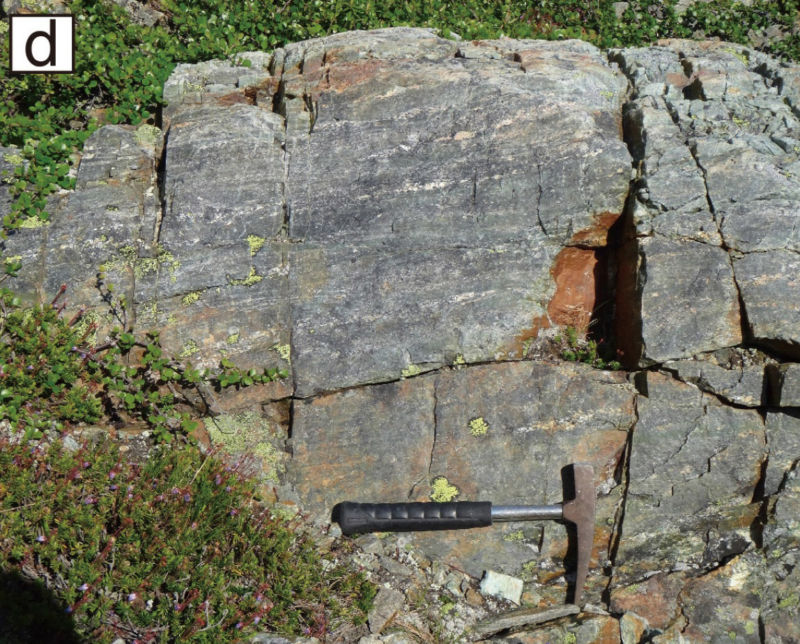
You could be forgiven for thinking that the remnants of the Earth’s first life don’t want to be found. Between geology and happenstance, the earliest life has certainly covered its tracks well. While paleontologists studying dinosaurs can sometimes bring an unambiguously gigantic femur home, those who study the origins of life are usually left arguing over the significance of microscopic motes of rock.
A new discovery in northernmost Labrador, made by a team led by Takayuki Tashiro of the University of Tokyo, fits into that latter category. But don’t let its abstract smallness of the evidence dull your excitement. The researchers argue they have uncovered evidence that there was life on Earth more than 3.95 billion years ago—on a planet that isn’t much more than 4.5 billion years old itself.
Counting carbon
Some of the evidence for early life is in the form of fossilized microorganisms. It can be difficult to rule out bacterium-shaped mineral bits that can form in other ways, but research published earlier this year identified microscopic structures that seem to fit the bill in 3.7 billion-year-old rocks that were once part of seafloor hydrothermal vents.
Microbial life similar to modern blue-green algae (actually a bacterium) has long built signature mounds of sediment in shallow waters, and these can also be preserved in the geologic record. A study last year purported to push the appearance of that type of evidence back to 3.7 billion years, as well.
But before either of those discoveries, the title of “oldest evidence for life” had belonged to carbon isotope signatures in Greenland rocks that are 3.7 to 3.8 billion years old. This title was extremely contentious, though. The idea behind that date is relatively straightforward: biology has a chemical preference for carbon-12 over carbon-13, so biological carbon tends to have less carbon-13 in it than average. These ancient, metamorphosed rocks contain carbon in the form of the mineral graphite. And that carbon had a biological bent—light on carbon-13.
Not everyone thought that life was the best explanation for this signature, though. Just as microbial fossils can have mineral lookalikes, there are non-biological ways to make graphite lose some of its carbon-13 in metamorphic rocks. These non-biological means require specific conditions. In some cases, those conditions seemed to fit the sample's history, providing a disappointing explanation for the carbon isotopes sans critters. But in other rock samples, some researchers argued that the alternative explanations couldn’t work, so that at least some of the graphite still pointed to a biological source.
Deep time
The new data is similar to the controversial evidence from Greenland, but it's from even older rocks in Labrador. It’s not clear exactly how old this metamorphosed sedimentary rocks are, but they have to be at least 3.95 billion years old—the age of a more-easily-datable rock that cuts through them. These rocks, again, contain bits of graphite with a biological-looking carbon isotope signature. But here, the researchers think they can make a cleaner case for how they got there.
They muster multiple lines of evidence that are pretty consistent with each other. First off, there are techniques to estimate the temperature of the graphite the time the mineral formed, as well as the temperature at the time the rock was metamorphosed deep below the surface of the Earth. Those line up, which is what you would expect to see if pre-existing carbon was turned into graphite during metamorphosis, rather than being added by some separate event.
Secondly, the exact carbon isotope signature varies from one type of “meta-sedimentary” rock to another. If the graphite had all come from some other process, like later reactions with hot hydrothermal fluids, you would expect all the graphite to be the same. Further evidence comes from the fact that the shapes and locations of the microscopic graphite grains look original—not, say, confined to cracks or assuming the distinctive crystalline shapes associated with alternative formation processes.
And finally, there’s a strong difference between the isotopic signature of the graphite carbon and the carbon locked up in calcite in the rocks—even stronger than in the Greenland rocks. It’s this difference that really implies living things were around to selectively gather carbon-12 over carbon-13.
One of the most likely non-biological ways to make lookalike graphite is a reaction of iron carbonate that produces magnetite and graphite. Several different types of “meta-sedimentary” rocks are in the area, including limestone (which is a carbonate) and lithified gravel. There is some magnetite in the limestone, so this alternative mechanism can’t be ruled out. But none of the other rock types contains these ingredients. And there’s no sign of hydrothermal reactions with other minerals that can produce graphite, which is the next most likely source of nonbiological graphite like this.
In total, the evidence isn’t inarguable—it never is, when it comes to the evidence for early life—but it adds to a rapidly growing pile of similar plausible finds. Pushing the existence of life back to about 4 billion years would be remarkable. It would mean we have just about run out of older rocks to check. Instead of “Can we find older evidence of life?” the question could soon be “Can we find any rocks older than life on Earth?”
Nature, 2017. DOI: 10.1038/nature24019 (About DOIs).
reader comments
76